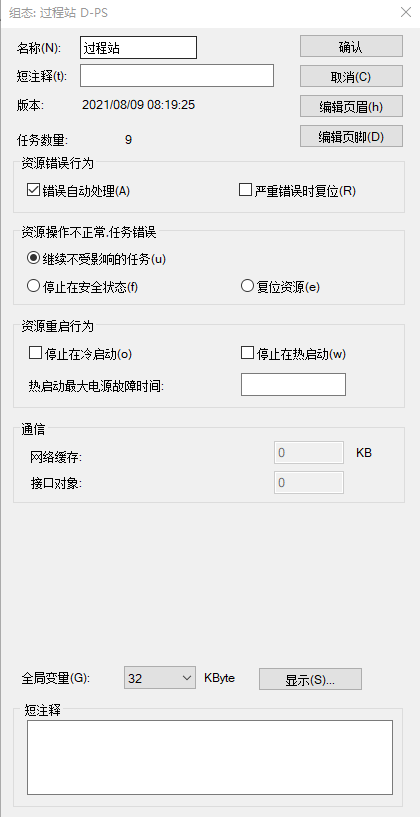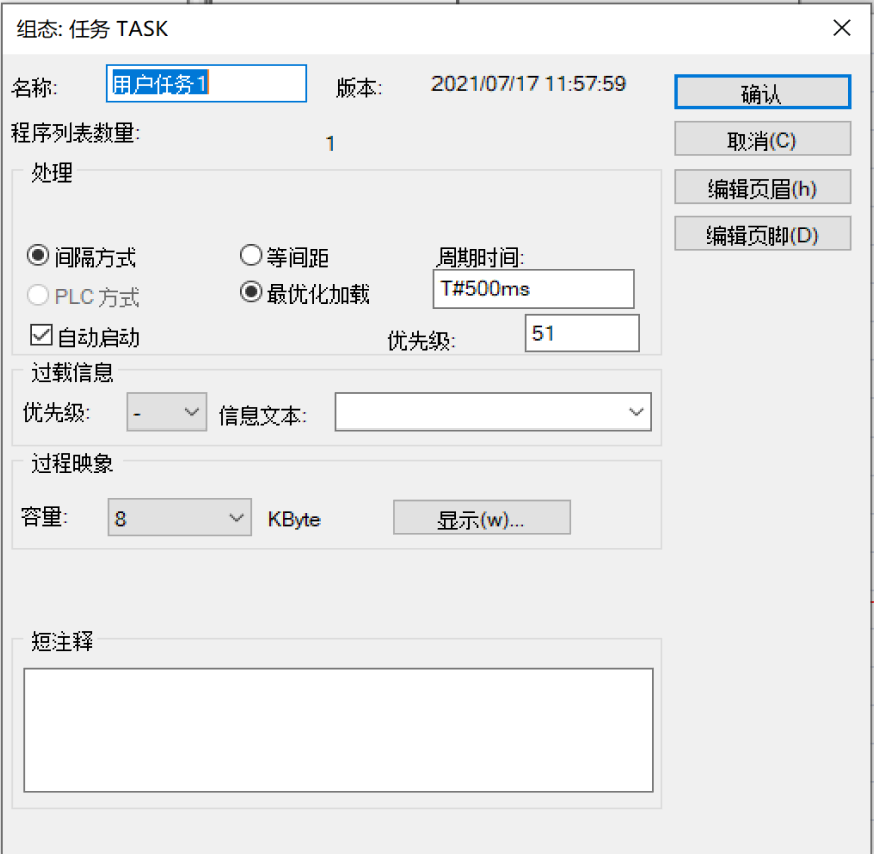ABB AC 900F学习笔记98:Freelance_Engineering_Process_Stations-04
继续学习,这是过程站文档的第四篇学习笔记,进展到29页了。
3 Process station configuration
过程站配置
3.1 Configuration in the project tree
配置项目树
In the project tree, the various software components of a project are shown in a clear overview. The individual elements or objects, usually referred to as the project objects, are implemented according to the IEC 61131-3 standard. While the Process station D-PS and Redundant process station D-PSR/RED resources are used for the actual process data editing, the Operator station D-OS or Gateway station DGS resources serve for process operation and monitoring and the OPC Server OPC-S resource for integrating data from other systems.
在项目树,项目的各种软件组件在概述中清晰可见。单个元素或者对象,通常称之为项目对象,按照IEC 61131-3标准执行。当过程站D-PS和冗余过程站D-PSR/RED资源用于实际过程数据编辑,操作员站D-OS或者网关站DGS资源为过程操作和监控,OPC服务器OPC-S资源用于集成来自其它系统的数据。
The DP-S or D-PS/RED resource in the project tree stands for a Freelance process station that is used to process the tasks and programs assigned to this resource. When inserting a resource, it is thus already defined whether the lower-level tasks and programs are processed in redundant or non-redundant manner. The assignment to the physical stations is made in the hardware manager. This assignment defines which available process, operator or gateway stations are used to process the individual programs.
项目树上的DP-S和D-PS/RED资源支持一个用于处理分配给该资源的任务和程序的Freelance过程站。因此,当插入一个资源,就已经定义了是否以冗余或非冗余的方式处理低级任务和程序。物理站的分配是在硬件管理器中进行。这个复制定义了哪些可用进程、操作员或者网关站用于处理各个程序。
The short name D-PS or D-PS/RED in the project tree indicates that no assignment to a physical station has been made yet in the hardware manager. Once the assignment has been made, the assigned station type is displayed. A redundant station is also represented by one resource in the project tree.
项目树上的短名称D-PS(过程站)或者冗余过程站D-PS/RED(冗余过程站)表明硬件管理器中还没有分配到物理站。一旦进行了分配,就会显示分配的站点类型。冗余站也由项目树中的一个资源表示。
比如下图就表示没有分配资源到物理站

下图就表示分配资源到了物理站

3.1.1 Inserting a resource in the project tree
项目树插入一个资源
All resources are inserted below the Software (SW) structural element.
所有的资源插入属于软件(SW)结构单元。
 |
Select the target position in the project tree. 选择项目树上的目标位置 > Insert > Above > 插入 > 前一个 a new process station is added above the selected object 一个新的过程站添加到选择的对象前面 > Insert > Below > 插入 > 后一个 a new process station is added below the selected object. 一个新的过程站议案加到选择对象的后面 > Insert > Next level > 插入 >下一级 a new process station is added to the next lower level. 一个新的过程站添加到下一个低的层级 |
The target position can be on the next lower level below the Software node,or on the Software node itself with Insert > Next level only.
目标位置不能在软件节点的下一级,只能在软件节点处插入下一级。
 |
> In the Object Selection dialog select Process station D-PS or Redundant 在对象选择对话框中选择过程站D-PS或者冗余过程站D-PS/RED,点击确定按钮 |
3.1.2 Configuring a process station
配置过程站
Double-click on the resource in the project tree to open the process station dialog. For a detailed description of all entries, see the Engineering Manual, System Configuration, Project tree. This manual includes all parameters, the configuration of which has a direct impact on the behavior in the event of errors in particular. For further details, see Resource behavior in the event of an unrecoverable task error on page 124..
双击打开项目树上的资源打开过程站对话框。查阅所有条目的详细说明,参考《the Engineering Manual》系统配置,项目树章节。本手册包含了所有的参数,特别是在发生错误时,这些参数的配置对行为有直接的影响。有关详细信息,请参阅124页在发生不可恢复的任务错误时的资源行为(本文档6.2.1)。

Number of tasks 任务数量
Indication of the number of tasks configured for this resource. With the User application tasks boot parameter, the memory required for this purpose will be reserved in the controller. See General boot parameters on page 39.
指示为此资源的任务数量。使用用户应用任务的引导参数,使用用户应用引导参数,为此目的所需的内存将保留在控制器中。请参阅第39页的通用启动参数。
Resource error behavior 资源错误行为
Automatic error handling 错误自动处理
Errors in user programs (e.g. division by zero) are automatically corrected. See Automatic error handling at task level on page 121.
用户程序中的错误(比如说除以0)会被自动修正。参阅第121页任务级错误自动处理。
Reset on fatal error 严重错误复位
A fatal error causes a stop of the CPU. When this item is selected, a cold start is performed after ten seconds and the application is continued.
一个严重的错误导直CPU停止。当此项勾选时,10秒钟后执行冷启动,任务程序继续。
Resource behavior on unrecoverable task error 资源操作不正常,任务错误
The radio buttons are used to define the behavior of the process station in the event of an unrecoverable error during runtime (e.g. division by zero without enabled error correction).
单选按钮定义了过程站在发生不可恢复的错误时候的行为(比如:在不启用错误校正的情况下除以零)
Continue with not affected tasks 继续不受影响的任务
Only the task containing the erroneous user program is set to the “not executable“ state. All other tasks that are not affected continue the program processing. (Default setting)
只有包含错误用户程序的任务被设置为“不可执行”状态。其他不受影响的任务继续程序处理(默认选项)
Stop in safety state 停止在安全状态
When an unrecoverable task error occurs, the station is set to safety state to avoid the output of inconsistent data to the process by not affected tasks. The CPU module stops the processing and the outputs of the I/O modules assume their safety values.
With redundant process station configurations, a redundancy toggle is caused. The system must be reset manually in order to restart a stopped station.
当不可恢复的任务错误发生时,过程站被设置为安全状态,以避免未受影响的任务向进程输出不一致的数据。CPU模块停止处理,IO模块输出取其安全值。冗余过程站选这个配置,会导致冗余切换。为了重新启动停止的站,必须手动复位系统。
Reset resource 复位资源
When an unrecoverable task error occurs, the station is set to safety state. The station is reset and automatically restarted after 10 seconds. Depending on the type of error, the station is rebooted by a cold start or initialized.
当不可恢复的错误发生时,过程站被设置为安全状态。过程站复位并在10秒钟后自动重启。根据错误的类型,工作站将通过冷启动或初始化重新启动。
For detailed information on error behavior, see Resource behavior in the event of an unrecoverable task error on page 124.
有关错误行为的详细信息,参阅第124页不可恢复任务错误事件的资源行为。
3.1.3 Inserting a task or a redundant task
插入任务或者冗余任务
In the process station, the actual programs run in tasks. The programs are processed either with program lists or with sequential function charts.
在过程站,实际的程序运行在任务中。程序好么在程序列表中处理,要么在顺控图(SFC)中处理。
All tasks of a process station are included in the USRTask (user tasks) and SYSTask (system tasks) lists.
过程站的所有任务都在用户任务和系统人物列表中。
The following system tasks are created for each resource:
为每个资源创建的系统任务如下:
- ColdSt - the cold start task is performed once upon cold start; transition from cold start or cold start stopped to running state
- 冷启动 - 冷启动任务在冷启动时执行一次。从冷启动或冷启动停止过渡到运行状态。
- WarmSt - The warm start task is performed once upon warm start; transition from warm start or warm start stopped to running state.
- 热启动 - 热启动任务在热启动时执行一次。从热启动或热启动停止过渡到运行状态。
- Run - The run task is performed once during transition from stopped to running state. After completion of the run task, the user tasks are started.
- 运行 - 启动任务在停止状态到运行状态过程中执行一次。执行任务完成后,将开始用户任务。
- Stop - The stop task is performed once; transition from running to stopped state.
- 停止 - 停止任务执行一次。从运行状态到停止状态的转换。
- Error - The error task is performed once upon detection of an error in a user program.
- 错误 - 一旦检测到用户程序中的错误,错误任务就执行一次。
- LatCSnd - Lateral communication send task; performs cyclic lateral communication required for sending.
- 横向通讯发送任务 - 横向通信发送任务;执行发送所需的循环横向通信。
- LatCRcv - Lateral communication receive task; performs cyclic lateral communication required for receiving.
- 横向通讯接收任务 - 横向沟通接收任务;执行接收所需的循环横向沟通
- RedSt - Redundancy start task; for redundant resources only; is performed directly once upon redundancy toggle prior to the first user task computing; this allows user programs triggered by a redundancy toggle to be executed.
- 冗余状态任务 - 冗余状态任务;只为冗余资源;在第一次用户任务计算之前,在荣誉切换时执行一次。这允许执行由冗余切换触发的用户程序
The following user tasks can be created in a resource:
在资源中可以创建下列用户程序:
- Task 任务
- Redundancy task 冗余任务
- Default task 默认任务
Task 任务
A task forms the frame for processing user programs. The programs in the user tasks are processed on a cyclic basis. The minimum cycle time is 5 ms. The processing trigger can be set to Equidistant or Load optimal. With the Load optimal task setting, the next task start time is calculated in each task cycle on the basis of the current time and the task cycle. During normal operation, there is no difference between the tasks. Only if a short load peak in the system prevents tasks computing and leads to delayed task processing, this difference has an impact. While Equidistant tasks adhere to the fixed time pattern, Load optimal tasks slightly extend the cycles in the event of overload to relieve the system.
任务构成了处理用户程序的框架。用户任务中的程序是循环处理的。最小的周期时间是5 ms.处理触发器可以设置为等距或最优化加载。使用最优化加载设置,在每个任务周期内,根据当前时间和任务周期计算下一个任务的启动时间。正常运行时,任务之间没有区别,只有当系统负载峰值较短时,才能阻止任务计算,导致任务处理延迟,这种差异是有影响的。等距任务遵循固定的时间模式,在过载的情况下,负载优化任务稍微延长了周期,以缓解系统的压力。
 |
Block import of sub-projects enables a resource to be automatically made redundant via the menu item Edit > Import block as redundant. This means
that the project elements are created and all variables are written in process image mode.
通过菜单项编辑>导入块作为冗余,子项目的块导入使资源自动成为冗余。这意味着项目元素将被创建,所有变量将以流程映像模式写入。
With the export of individual process stations, the module equipment and the I/O channel assignment - which would otherwise be lost - are taken over
on re-import.
伴随单个过程站的导出,模块设备和通道数据配置 - 除此之外将丢失 - 在重新导入时被接管。
For more detailed information, see Changing a non-redundant process station into a redundant one on page 118.
更多细节,参阅118页的修改非冗余过程站到冗余过程站。
|

任务优先级控制所有处于“运行”状态的任务的处理。周期时间相同的多个任务的多任务处理由优先级控制。
 |
Use the default task priorities, if possible. Configure redundant user tasks with
task priorities below 95.
使用默认任务的优先级,如果可能的话,使用优先级低于95配置冗余用户任务.
User tasks with excessively high priority, in particular when combined with fast
task cycle times, may block the system communication and prevent data
transmission to the operator and gateway stations, for instance.
优先级过高的用户任务,特别是当与快速任务周期相结合时,可能会阻塞系统通讯,阻止数据
传输到操作员和网管站。
Controller overload scenarios may be caused especially by redundant user tasks
with high priority and fast task cycle times. Avoid using the redundant default
task and possibly select task cycle times higher than 50 ms in order to minimize
the overload risk of a redundant process station.
尤其是具有高优先级和快速任务周期的冗余用户任务可能导致控制器过载情况可能发生。 避免使用冗余默认任务,并可能选择高于50ms的任务周期,以最小化冗余处理站的过载风险。
|


